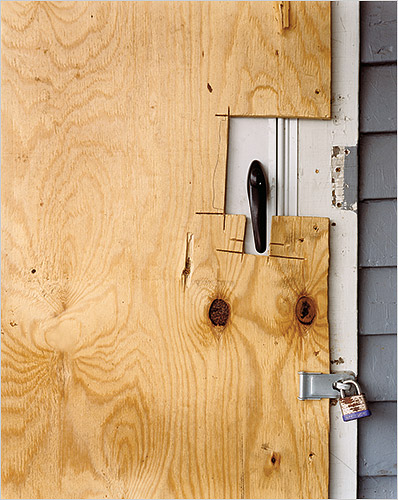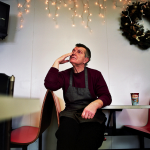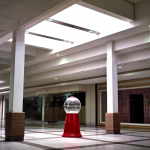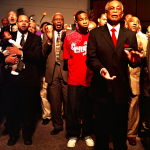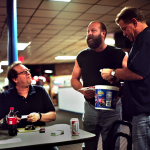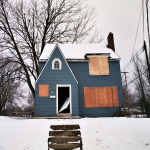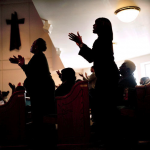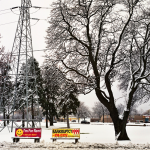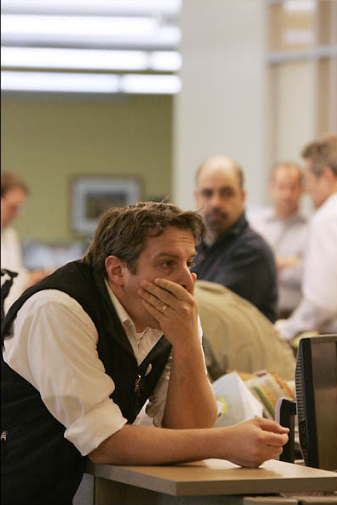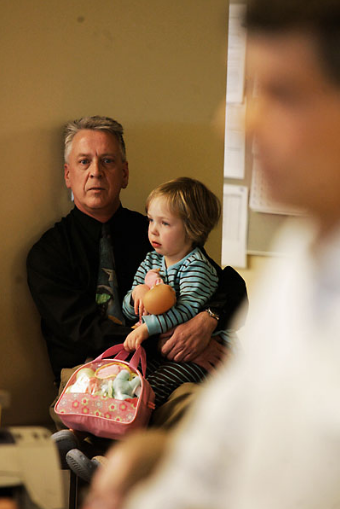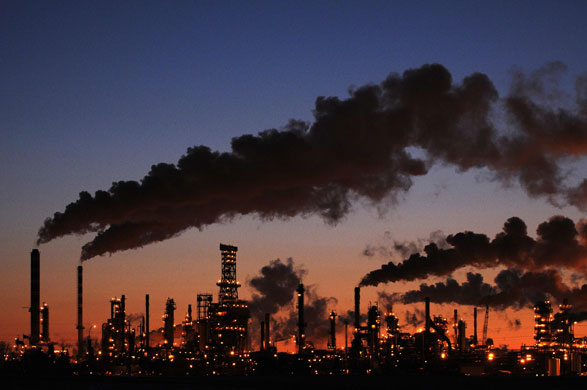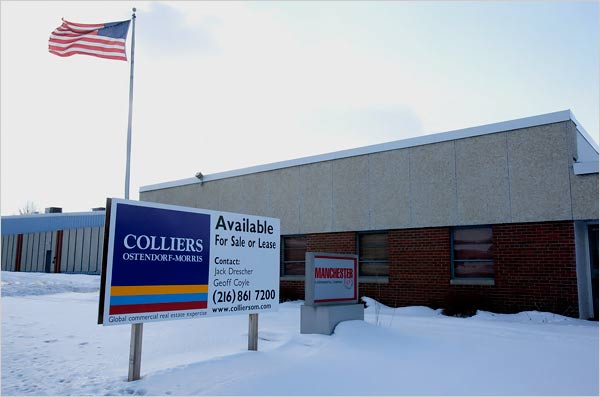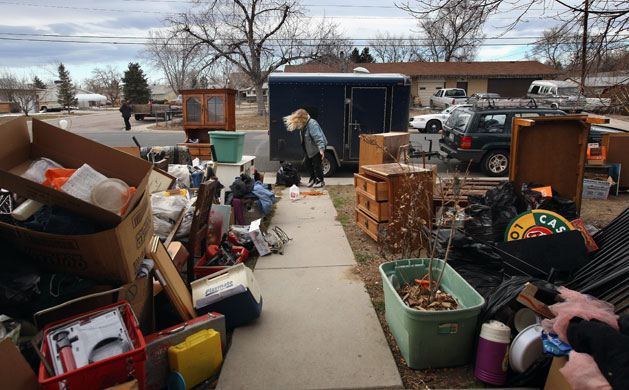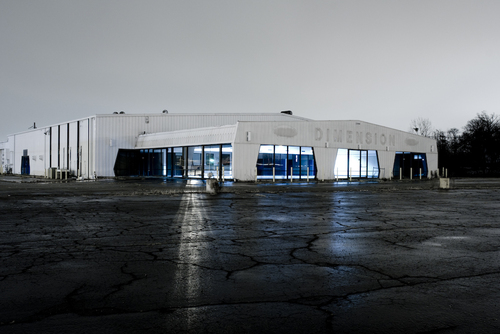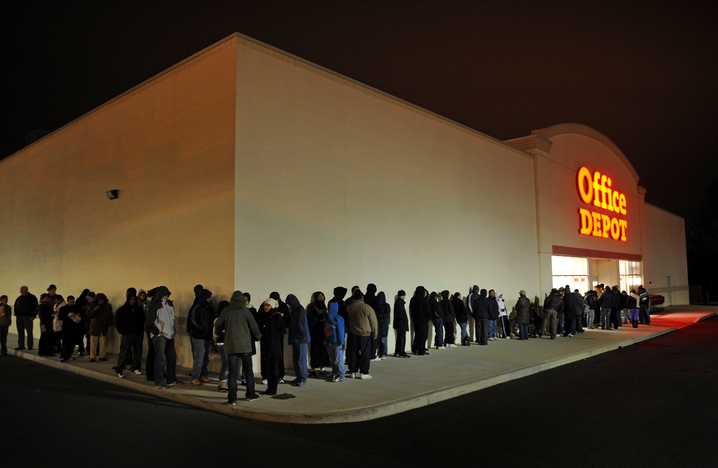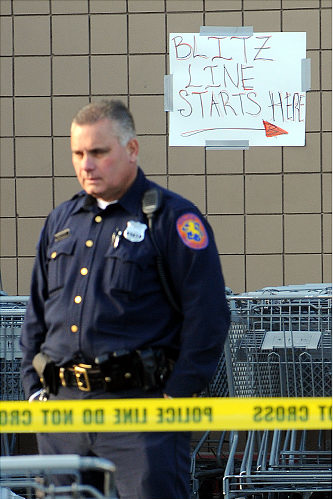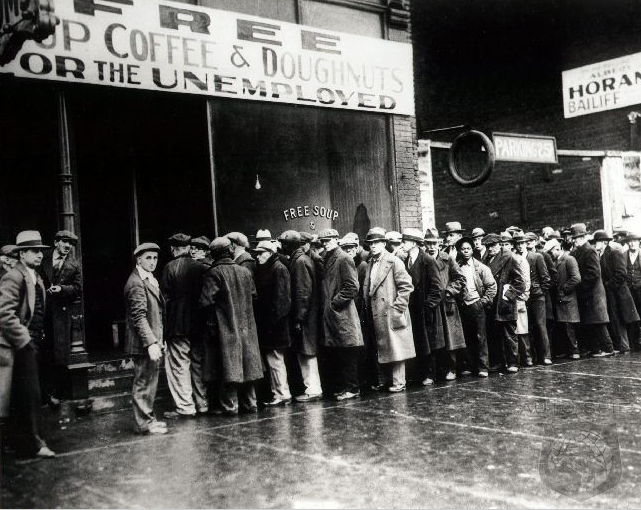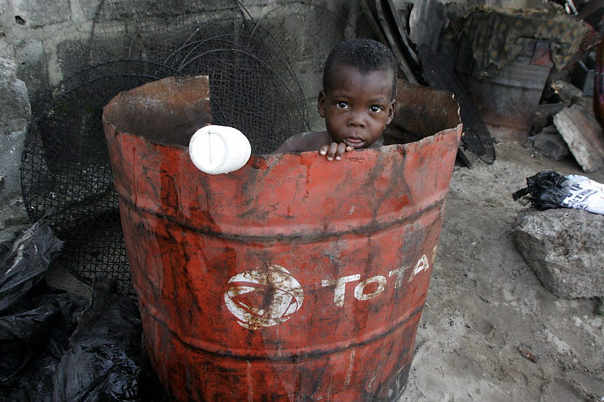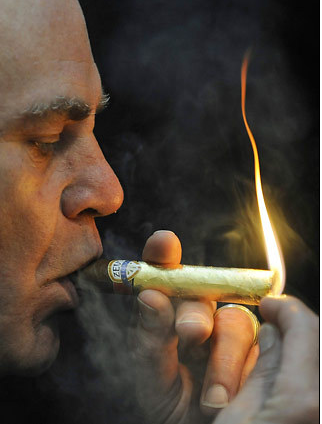I’ve written recently about the need to dial down aesthetic expectations in order to document the reality of the current economic catastrophe. A photograph from the cover of this week’s New York Times Magazine provides an eloquent example of how a humble image can capture the consequences of an economic disaster.
You are looking at a boarded-up doorway of an abandoned house in the Slavic Village neighborhood of Cleveland, Ohio. The neighborhood’s name might evoke the Immigrant Dream and so heighten the significance of the image, but I don’t think that is needed. The visual surface of the image presents an unrelenting litany of decline and disruption.
The plywood board, which looks like the cheapest stock you can get, has been hacked roughly with a saw to be cut to the frame and door handle. The cutting obviously was done sloppily, because what the hell does it matter for a job like this? Cutting like that also can be done quickly, as if the crew has a lot more to board up. (Cleveland has at least 10,000 abandoned homes.) The padlock is rusty–real old, as if bought as part of a shipment of thousands of used locks, or maybe it’s the lock the family assumes they’ll never see again. The one piece of new equipment is the hasp attaching the plywood to the door frame; not something most homeowners or real estate companies want to have on hand.
The materials are cheap as can be. And can be so, as they really are not much more than “keep out” signs. Anyone over age ten can break through that door if they want to. The house is not in great shape either. Flaking paint, the door frame unpainted after pulling off a hinge, the flimsy outer door, all suggest that this wasn’t a high end development to begin with–certainly nothing that would drive the imagination of those frenzied to bail out Wall Street firms, big developers, and others “suffering” because their McMansions have temporarily declined in value. By contrast, this photo is a study in how those near the bottom can still have far to fall.
And then what? The photo’s final effect comes from being an image of foreclosure–of literally shutting out, closing early, stopping. We see layers of blockage: the board, hasp, lock, closed door, frame–every part of the image says you might go forward but can’t. Even the shingles jut forward but recede to wall, and the trace of an old hinge reminds that the current hasp also could be removed instead of locked. Likewise, the viewer’s gaze, which is pulled toward the vanishing point in the middle of the picture, is continually interrupted by the closed surfaces. The close cropping insures that no windows, yard, or neighborhood view soften the effect of hitting this wall. The image might be described as adding insult to injury, as it stops any attempt to take the long view, larger perspective, or other means for rationalizing away the actual destruction. Instead, it says, look at this shuttered house, up close, in all its sad particularly. This is the texture of decline.
Photograph by Reuben Cox for The New York Times. The photograph was part of a slide show about the housing disaster in Cleveland; the slides accompanied the story, “All Boarded Up.”
